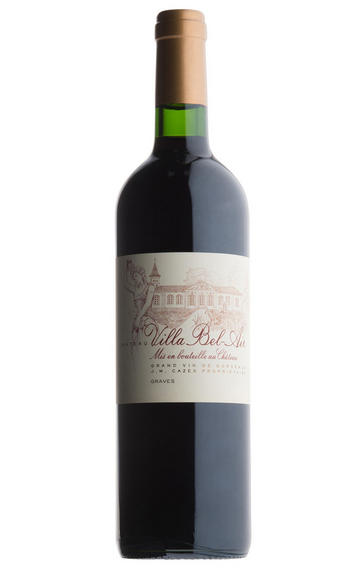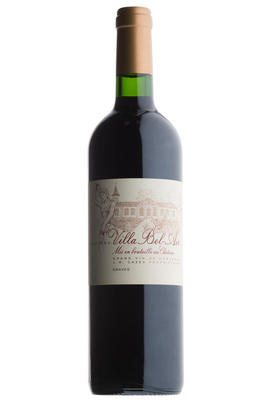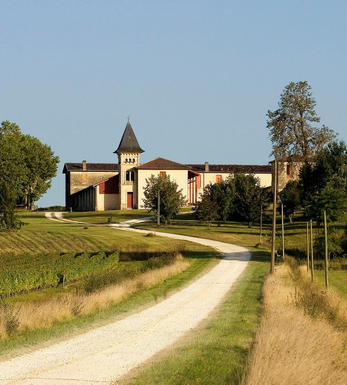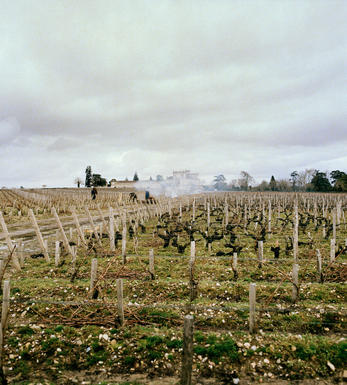
2022 Château Villa Bel-Air, Graves, Bordeaux

Critics reviews
A strong effort, the 2022 Villa Bel Air, a blend of 52.5% Cabernet Sauvignon, 44% Merlot and 3.5% Cabernet Franc, offers up an elegant yet inviting bouquet of blueberry, wild strawberries, licorice and cassis. Moderately weighted, the palate is nicely balanced, fresh and precise, crystalline and juicy, with a long, saline finish.
Johan Castaing, Wine Advocate (April 2023)
Mix of crushed blackberries, spices and walnuts with medium body and hints of roasted coffee beans. Firm tannins. A little chewy. It should improve with the elevage.
James Suckling, JamesSuckling.com (April 2023)
Juicy and supple, treads quite lightly in terms of fruit density but the tannins are nicely prominent, firm and filling giving the slightly narrow but well controlled frame to the dark bramble fruits. Nothing harsh here, still with juiciness and gentle acidity. Harvest 17 September - 7 October. Ageing 18 months; 30% new barrels, 50% one wine. Derenoncourt consultants.
Drink 2026 - 2036
Georgina Hindle, Decanter (April 2023)
Coming from more clay soils, the 2022 Château Villa Bel-Air has plenty of richness and concentration, with medium-bodied aromas and flavours of black cherries, blackberries, violets, and chocolate. It’s nicely balanced, has ripe tannins, and a good finish.
Jeb Dunnuck, JebDunnuck.com (May 2023)
About this WINE

Chateau Villa Bel-Air
Château Villa Bel-Air is located in the Southern part of Graves, in the parish of Saint-Morillon, near La Brède. Villa Bel-Air's buildings have been listed as part of France's historical monuments and are a perfect illustration of the French Revolution period.
In 1988, the Cazes family, already owners of Châteaux Lynch-Bages and Les Ormes de Pez, bought Villa Bel-Air. Jean-Michel Cazes undertook an important programme of restoration and enlisted Daniel Llose (General Technical Manager for the Cazes family) and Guy Delestrac to improve the vineyards. The old parcels of land, which had been pulled out, were replanted and the property was equipped with a new drainage system.
The production at Villa Bel-Air is done with great care and the wines are traditionally fermented in stainless steel. After blending, the wines are oak aged for 12 to 15 months and each barrel is racked every three months. The wines produced are supple, elegant, well balanced and display luscious tannins.

Graves
Graves is the region which first established Bordeaux's wine reputation. Its wines were exported to England as early as the 12th century and Samuel Pepys drank Ho Bryan (sic) in London on 10th April, 1663.
The names Graves is derived from ‘gravel’ and the best soils are gravel-rich, mixed with sand and occasionally clay. Graves is larger in areas than the Médoc but produces only half the amount of wine. The best wines of Graves were initially classified in 1953 with this classification being confirmed in 1959.
Until 1987, this entire region, which runs immediately south of the city of Bordeaux until it reaches Sauternes, was known as the Graves and its entirety is still sometimes informally referred to as such, but from the 1986 vintage a new communal district was created within Graves, based on the districts of Pessac and Léognan, the first of which lies within the suburbs of the city.
Pessac-Léognan has the best soils of the region, very similar to those of the Médoc, although the depth of gravel is more variable, and contains all the Classed Growths of the region. Some of its great names, including Ch. Haut-Brion, even sit serenely and resolutely in Bordeaux's southern urban sprawl.
The climate is milder than to the north of the city, and the harvest can occur up to two weeks earlier. This gives the best wines a heady, rich and almost savoury character, laced with notes of tobacco, spice and leather. Further south, the soil is sandier with more clay, and the wines are lighter, fruity and suitable for earlier drinking.
Recommended Châteaux
Ch. Haut-Brion, Ch. la Mission Haut-Brion, Ch. Pape Clément, Ch. Haut-Bailly, Domaine de Chevalier, Ch. Larrivet Haut-Brion, Ch. Les Carmes Haut-Brion, Ch. La Garde, Villa Bel-Air.

Cabernet Sauvignon Blend
Cabernet Sauvignon lends itself particularly well in blends with Merlot. This is actually the archetypal Bordeaux blend, though in different proportions in the sub-regions and sometimes topped up with Cabernet Franc, Malbec, and Petit Verdot.
In the Médoc and Graves the percentage of Cabernet Sauvignon in the blend can range from 95% (Mouton-Rothschild) to as low as 40%. It is particularly suited to the dry, warm, free- draining, gravel-rich soils and is responsible for the redolent cassis characteristics as well as the depth of colour, tannic structure and pronounced acidity of Médoc wines. However 100% Cabernet Sauvignon wines can be slightly hollow-tasting in the middle palate and Merlot with its generous, fleshy fruit flavours acts as a perfect foil by filling in this cavity.
In St-Emilion and Pomerol, the blends are Merlot dominated as Cabernet Sauvignon can struggle to ripen there - when it is included, it adds structure and body to the wine. Sassicaia is the most famous Bordeaux blend in Italy and has spawned many imitations, whereby the blend is now firmly established in the New World and particularly in California and Australia.


Buying options
Add to wishlist
Description
This is attractively aromatic with soft red fruit, a leafy note that evolves to white pepper on the finish, and a satisfying palate of warm earth and liquorice. When owned by the Cazes family, this was always a very reliable and good-value source of decent Claret.
After being sold in 2017 to the Ballande family and becoming the project of Guillaume Bastard de Crisnay, there is now a sense of matters moving up a gear. Stéphane Derenoncourt’s team have been engaged as technical consultants and particular focus has been applied to the red wine. The wine now seems tighter, better focused and has more backbone.
Merlot 52%; Cabernet Sauvignon 44%; Cabernet Franc 4%
Drink 2024 - 2032
Berry Bros. & Rudd (April 2023)
wine at a glance
Delivery and quality guarantee